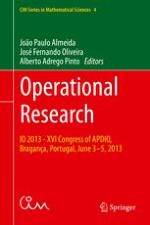This volume presents selected contributions by top researchers in the field of operations research, originating from the XVI Congress of APDIO. It provides interesting findings and applications of operations research methods and techniques in a wide variety of problems. The contributions address complex real-world problems, including inventory management with lateral transshipments, sectors and routes in solid-waste collection and production planning for perishable food products. It also discusses the latest techniques, making the volume a valuable tool for researchers, students and practitioners who wish to learn about current trends. Of particular interest are the applications of nonlinear and mixed-integer programming, data envelopment analysis, clustering techniques, hybrid heuristics, supply chain management and lot sizing, as well as job scheduling problems.
This biennial conference, organized by APDIO, the Portuguese Association of Operational Research, held in Bragança, Portugal, in June 2013, presented a perfect opportunity to discuss the latest development in this field and to narrow the gap between academic researchers and practitioners.
